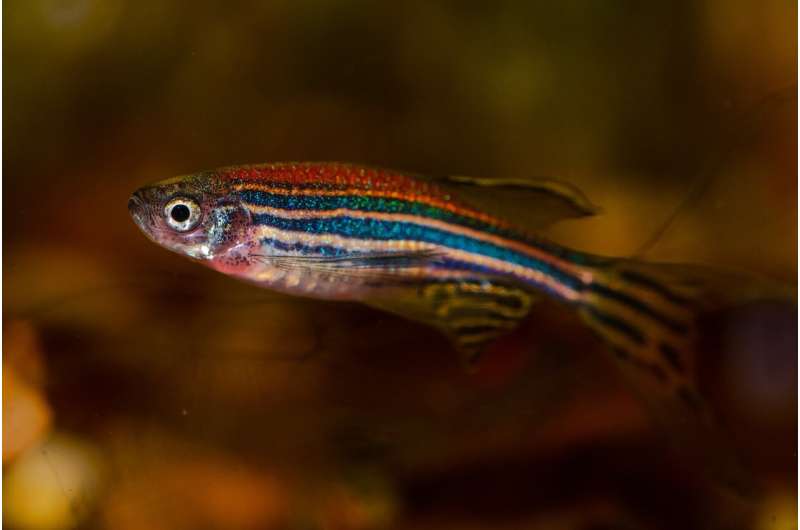Credit: Pixabay/CC0 Public Domain
The inter-specific spermatogonial stem cells (SSCs) transplantation (SSCT) is a surrogate reproduction technique. It can produce the functional gametes of species B with the gonads of species A, thus providing a powerful tool for production of gametes derived from endangered species or those with desirable traits.
However, generation of genome-edited gametes from a different species or from a phylogenetically distant species such as a different subfamily, by SSCT, has always been challenging.
Using two small cyprinid fishes from different subfamilies, Chinese rare minnow (gobiocypris rarus, for brief: Gr) and zebrafish (danio rerio), a research group led by Prof. Sun Yonghua from the Institute of Hydrobiology (IHB) of the Chinese Academy of Sciences obtained Gr-derived genome-edited sperm in zebrafish through SSCT.
It's the first time that surrogate reproduction between two species from a different subfamily was achieved.
This study was published in Science China Life Sciences.
The researchers optimized the process of surrogate reproduction by combining CRISPR/Cas9 genome editing and SSCT technology, and obtained genome-edited sperm of gobiocypris rarus from zebrafish surrogates.
They further described the processes of colonization, proliferation, and differentiation of transplanted SSCs in the recipient gonads, and showed that the reconstructed fertile testis contained Gr spermatids and zebrafish testicular somatic cells.
Interestingly, the researchers found that although the SSCT sperm could only fertilize the Gr eggs, they somehow resembled the sperm of zebrafish host but not donor Gr in morphology and swimming behavior. By RNA-seq analysis of the SSCT sperm and the Gr sperm, they demonstrated that the existence of zebrafish-derived transcripts in the SSCT sperm might affect the development and morphology of SSCT sperm.
This study for the first time demonstrates the possibility of xenogenic SSCT between different subfamilies, and surrogate production of genome-edited gametes from a different species. It opens a new avenue for accelerating breeding process of commercial fish or even livestock.
More information: Fenghua Zhang et al, Surrogate production of genome-edited sperm from a different subfamily by spermatogonial stem cell transplantation, Science China Life Sciences (2021). DOI: 10.1007/s11427-021-1989-9
Journal information: Science China Life Sciences
Provided by Chinese Academy of Sciences























